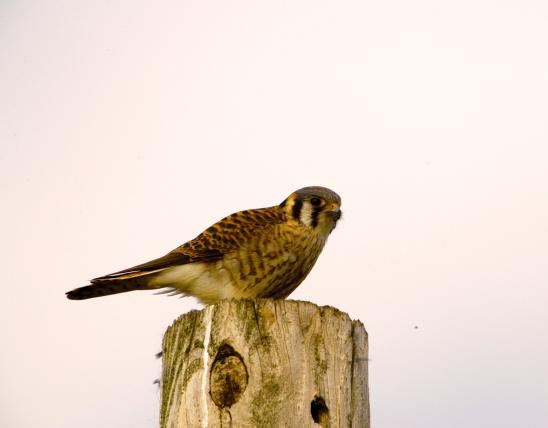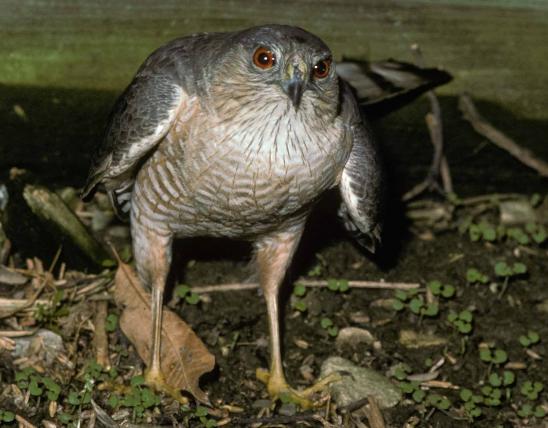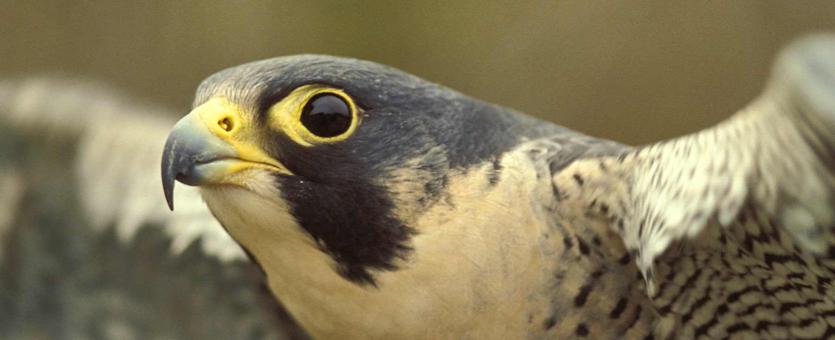
Adult peregrine falcon upperparts are blue gray. The crown and nape are black, and a black wedge extends below the eye. Underparts are white with dark, narrow, horizontal barring. The wings are long and pointed and extend nearly as far as the tip of the long tail. Juveniles have heavily marked, vertically streaked underparts; above, they are brownish, with lighter edges to feathers giving it a scalloped look; there is a dark mustache streak below the eyes. Peregrines are known for their ability to dive at speeds of more than 200 mph, making them one of the world's fastest birds.
Similar species: Peregrine falcons are much larger than American kestrels, which are about half their size. The merlin, another falcon, is also much smaller, and it lacks the black "sideburn" on the side of the head. Prairie falcons, which occur to our west, sometimes are seen in Missouri in winter. They have brown, not blue-gray backs and lack the broad, blackish mustache patch. Finally, distinguish falcons from accipiters (such as Cooper's and sharp-shinned hawks) by wing shape; falcons have long, pointed wings, while accipiter hawks have short, rounded wings.
Length: 15-21 inches (tip of bill to tip of tail); wingspan: 38–45 inches. Females are larger.

Statewide.
Habitat and Conservation
Historically, peregrines nested in small numbers on bluffs along the Mississippi, Missouri, and Gasconade rivers. By the late 1800s only a few pairs remained in the state. Restoration projects have been relatively successful, and populations of peregrines have been established. In cities, peregrines nest on the ledges of tall buildings and other tall structures, including bridges, in lieu of cliff nesting sites. They also use nest boxes placed in these locations. Peregrines are also returning to former nest sites on suitable bluffs.
Food
Primarily other birds. In urban areas, peregrines hunt starlings, pigeons, and other city birds. Peregrines watch for prey from high perches, then fly down at them at incredible speed, in what is called a stoop, tucking in their wings to decrease aerodynamic drag.
Status
A species of conservation concern in Missouri. Formerly extirpated in our state and from much of North America. This is one of the species that was nearly eradicated because of side-effects of DDT and other pesticides. Restoration efforts are helping to return peregrines to our state.
Life Cycle
Many of the peregrines living in Missouri’s urban centers were captive-raised and now use nest boxes and other suitable locations on tall buildings for their eggs. Nests in the wild are typically a “scrape” with accumulated debris on ledges and cliffs and in old tree cavities. Eggs, numbering 3–4, are typically laid from April through June. Incubation lasts for 29–32 days, and it takes 35–42 days for the young to fledge. Breeding pairs usually mate for life.
Human Connections
Peregrine falcons have been prized by falconers since ancient times for their ability to hunt prey. Today, people are thrilled by their intensely fast flight and maneuvering ability. As this species neared extinction, humans have rallied to save it — attesting to our appreciation of peregrines.
Ecosystem Connections
This predator specializes in eating other birds, and that’s one reason for its extremely fast and agile flight. In cities, peregrines feast on urban pigeons and starlings. Young peregrines, and even adults, can fall prey to great horned owls, eagles, and other peregrine falcons.

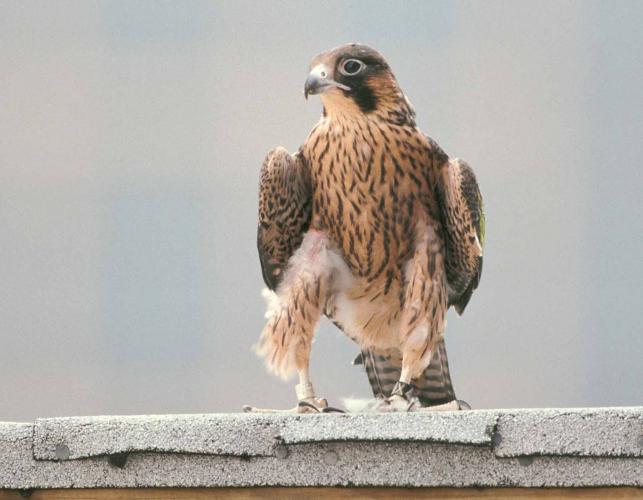


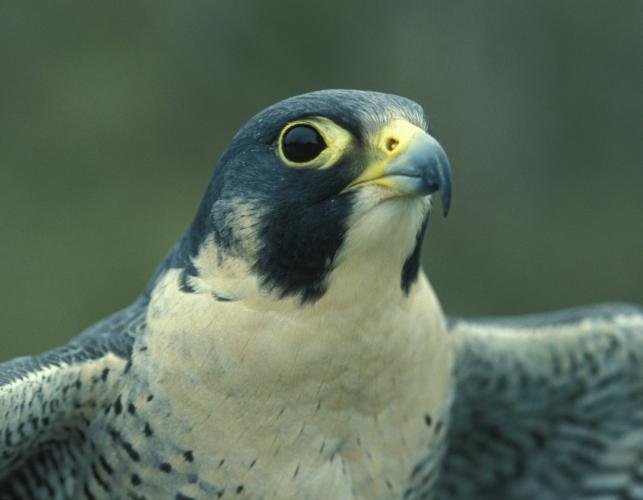





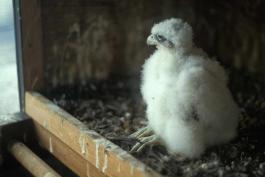


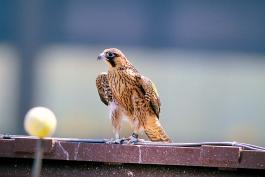
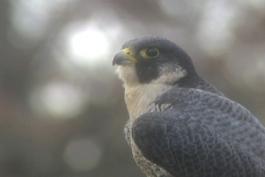
About 350 species of birds are likely to be seen in Missouri, though nearly 400 have been recorded within our borders. Most people know a bird when they see one — it has feathers, wings, and a bill. Birds are warm-blooded, and most species can fly. Many migrate hundreds or thousands of miles. Birds lay hard-shelled eggs (often in a nest), and the parents care for the young. Many communicate with songs and calls.






















